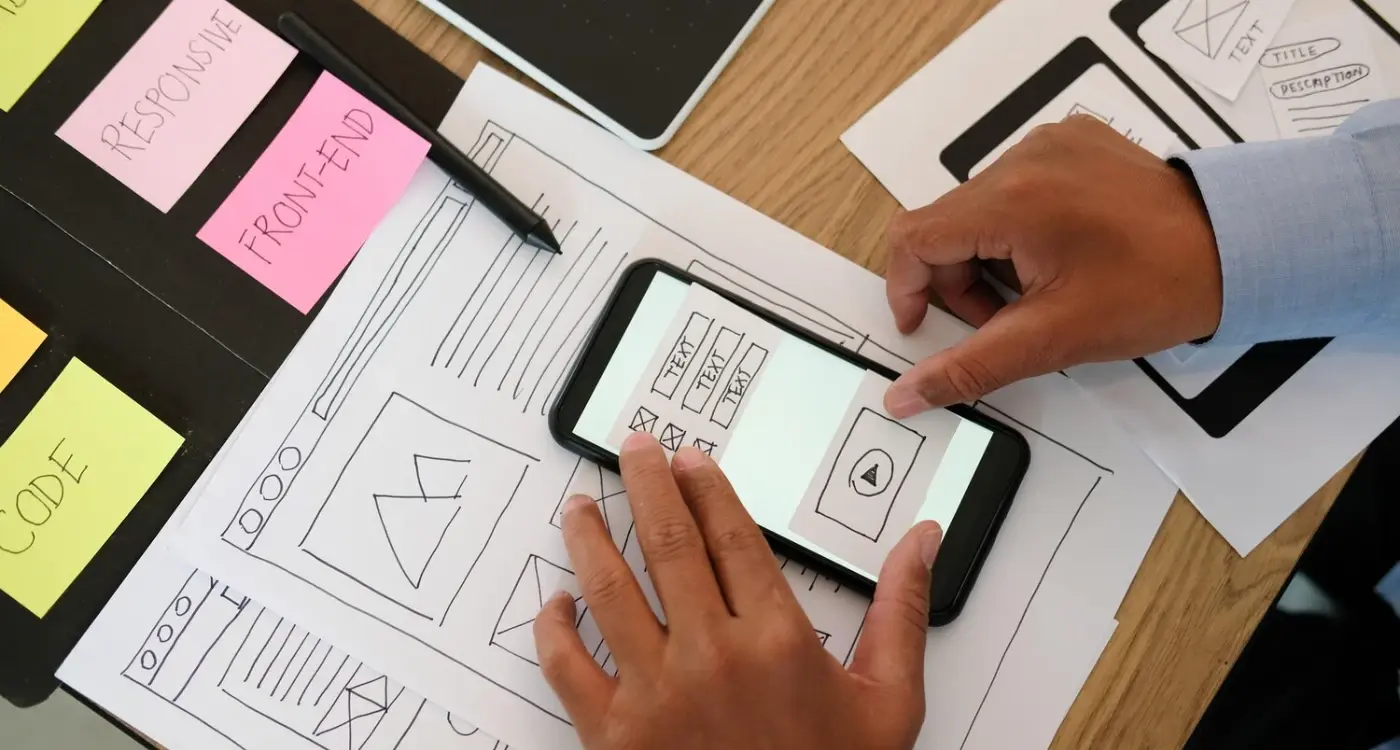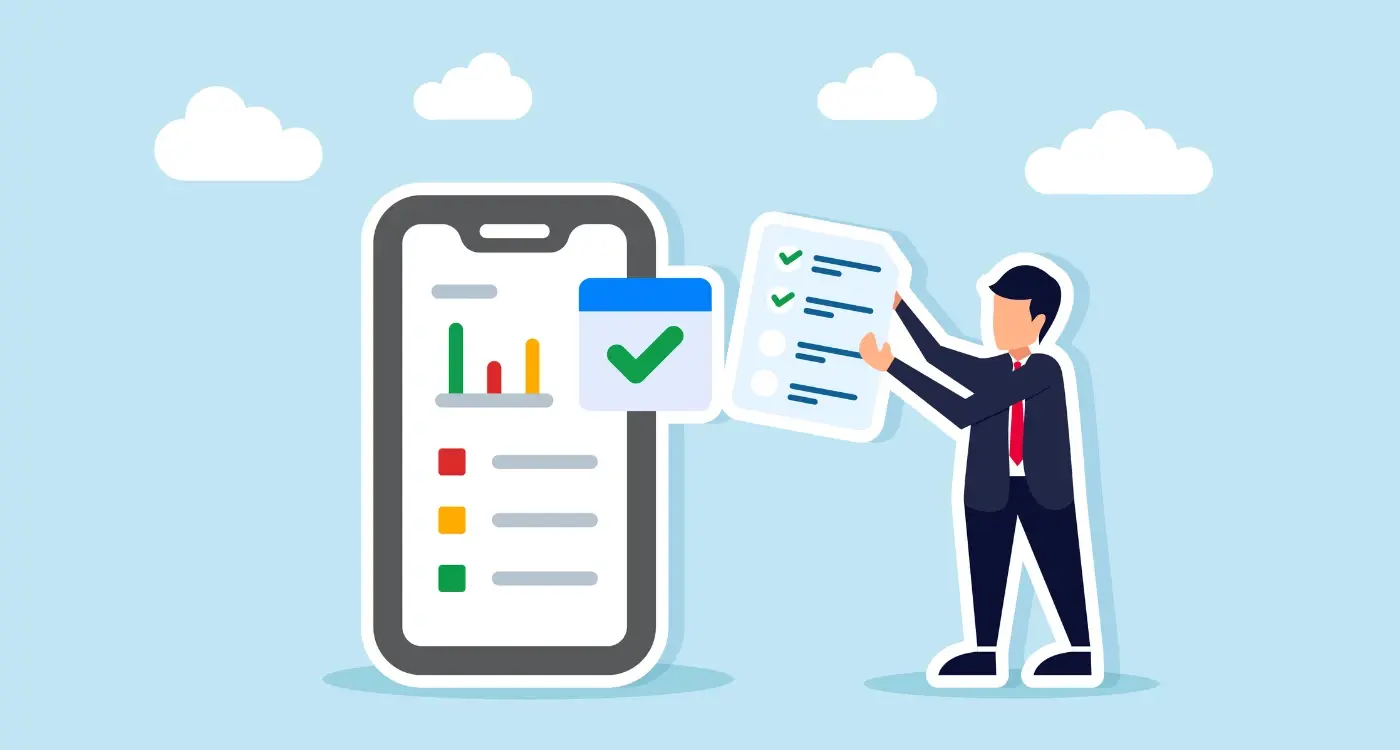What Problem Does My App Solve for Users?
Building a successful mobile app isn't just about clever code or stunning design - it's about solving real problems for real people. As app developers who've helped countless entrepreneurs bring their ideas to life since 2015, we've learned that the most fundamental question you need to answer is deceptively simple: What problem does your app actually solve?
The most successful apps don't create new needs - they address existing ones in ways that make people wonder how they ever lived without them.
Whether you're sketching out your first app idea on the back of a napkin or refining an existing concept, understanding your app's core purpose is crucial. Think about apps you use daily - perhaps WhatsApp for staying connected with loved ones, or Deliveroo for those evenings when cooking feels impossible. These apps succeeded because they identified genuine human needs and addressed them effectively.
Throughout this guide, we'll walk you through the essential steps of defining, validating, and refining your app's problem-solving capabilities. We'll help you think beyond the exciting features and flashy interfaces to focus on what truly matters - creating genuine value for your users.
Having guided hundreds of apps from concept to launch, we've seen both triumph and struggle. The difference often lies in how well the app answers our central question. So, grab a cuppa, get comfortable, and let's explore how to ensure your app becomes an indispensable tool in your users' lives rather than just another icon gathering digital dust on their home screens.
Understanding Your App's Purpose
Every successful app begins with a clear sense of purpose. Think of your app like a compass - it needs to point clearly in one direction to be truly useful. As app developers who've worked with countless startups and established businesses since 2015, we've learned that the most successful apps are those that have crystal-clear objectives.
Core Elements of App Purpose
Your app's purpose goes beyond just what it does - it's about the transformation it creates in users' lives. Perhaps you're feeling overwhelmed trying to pinpoint exactly what your app should achieve. That's perfectly normal, and we'll help you break it down into manageable pieces.
- Primary Function: The main task your app performs
- User Benefit: The positive change it brings to users' lives
- Long-term Impact: How it continues to add value over time
- Social Value: Its contribution to the broader community
Remember when WhatsApp first launched? Its purpose wasn't just to send messages - it was to connect people globally without incurring SMS charges. That clear purpose guided every feature they developed.
A helpful exercise is to complete this simple sentence: "My app helps [specific user type] to [complete specific action] so they can [achieve specific outcome]." For instance, "My app helps busy parents to organise after-school activities so they can reduce stress and spend more quality time with their children."
Take your time with this foundational step - it's like building a house. The clearer your purpose, the stronger your foundation, and the more likely your app is to succeed in today's competitive marketplace.
Identifying Your Target Users
Picture yourself walking into a room full of potential app users. Who are they? What brings them there? Understanding your target users is like getting to know new friends - it requires curiosity, empathy and genuine interest in their lives.
Creating User Personas
After working with hundreds of app developers over the years, we've learned that successful apps aren't built for everyone - they're built for specific someone's. Think about who will actually download and use your app. Are they busy parents juggling work and family life? Young professionals looking to optimise their daily routines? University students trying to manage their studies?
Let's break down the key characteristics you should consider when defining your target users:
- Demographics (age, location, occupation, income)
- Behaviour patterns and daily routines
- Technical proficiency and device preferences
- Goals and aspirations
- Frustrations and challenges
Remember, these aren't just data points - they're real people with real needs. For instance, if you're developing a fitness app, your target user might be Sarah, a 32-year-old working mum who wants to exercise but struggles to find time between meetings and school runs.
Create 2-3 detailed user personas and keep them visible throughout your development process. Give them names, backgrounds, and specific scenarios. This helps ensure every feature you build serves a real purpose for real people.
The clearer you are about who you're building for, the more likely you are to create something they'll truly value and use regularly. It's about quality of connection, not quantity of users.
Defining User Pain Points
Think of user pain points like a splinter in your finger - it might be small, but it's incredibly bothersome until you solve it. When developing your app, identifying these 'splinters' is crucial for creating something truly valuable.
Understanding Real User Struggles
Having worked with countless app developers over the past eight years, we've learned that the most successful apps address genuine, everyday challenges. Perhaps your users are tired of queueing at restaurants, struggle to find parking in busy city centres, or can't keep track of their family's busy schedules. These frustrations, however small they might seem, represent real opportunities for your app to make a difference.
Digging Deeper into the Problem
To properly understand pain points, you'll need to look beyond surface-level complaints. For instance, if people say they struggle with meal planning, the real pain point might not be about choosing recipes - it could be about managing time, staying within a budget, or accommodating different dietary requirements in one household. Think about the last time you faced a similar challenge - what aspects of it were most frustrating?
Consider keeping a 'pain point diary' where you document specific user challenges. Talk to potential users, observe their behaviour, and pay attention to their workarounds for existing solutions. Remember, just as a GP wouldn't prescribe medication without understanding symptoms, you shouldn't build features without thoroughly understanding the problems they're meant to solve.
Finding Your Unique Solution
After identifying your users' pain points, it's time for the exciting part - crafting your unique solution. Think of this stage as being like a chef developing a signature dish; you're not just cooking another meal, you're creating something special that will delight your diners.
Innovation isn't about creating something entirely new - it's about solving existing problems in better ways than anyone else has before.
Building on Your Research
Your solution should directly address the pain points you've uncovered, but with a special twist that makes it uniquely yours. Perhaps it's combining features in a way nobody else has thought of, or maybe it's simplifying a complex process into three easy steps. Remember how Deliveroo transformed takeaway ordering by focusing on premium restaurants that traditionally didn't deliver? That's the kind of innovative thinking we're after.
Making It Truly Unique
To develop your unique solution, consider these aspects: What makes your approach different? How can you solve the problem more efficiently or effectively than existing solutions? Sometimes, the most powerful unique selling point isn't a revolutionary new feature - it might be making something significantly easier, faster, or more enjoyable to use.
Don't be afraid to challenge conventional wisdom. WhatsApp became a global phenomenon not by inventing messaging, but by making it simpler and more accessible. Your unique solution might similarly come from removing complications rather than adding features. The key is to ensure that every element of your solution ties back to solving your users' core problems in a meaningful way.
Testing Your App's Value Proposition
Have you ever been absolutely certain about an idea, only to discover later that others don't quite see it the same way? That's precisely why testing your app's value proposition is crucial before diving deep into development.
Think of your value proposition as a promise to your users. Like taste-testing a new recipe before serving it at a dinner party, you'll want to validate that your app's core offering resonates with your intended audience. At Glance, we've seen countless brilliant ideas that needed a bit of fine-tuning after initial testing - and that's perfectly normal!
Essential Testing Methods
- Create a landing page explaining your app concept and measure interest through sign-ups
- Build a basic prototype or wireframe and conduct user interviews
- Run small-scale social media campaigns to gauge public response
- Use A/B testing with different value propositions to see which resonates most
- Share your concept in relevant online communities and forums
Remember that old saying about measuring twice and cutting once? It's particularly relevant here. We recently worked with a fitness app developer who was convinced users wanted complex workout analytics. After testing, we discovered they actually preferred simple, achievable daily challenges instead.
The key is to remain open-minded during this process. Your initial assumption might be spot-on, or you might discover an even better way to solve your users' problems. Either way, testing your value proposition early saves time, money, and helps ensure you're building something people genuinely want to use.
Market Research and Competition
Let's face it - developing an app is exciting, but it can also feel a bit like trying to find your way through a maze. You might be wondering, "How do I know what's already out there?" or "What if someone's already doing what I want to do?" These are perfectly normal concerns, and we're here to help you navigate through them.
Understanding Your Market Landscape
Think of market research as being a detective. You're gathering clues about what's working in your chosen space and what isn't. Start by downloading similar apps - yes, your competition! Use them, understand them, and most importantly, spot their weaknesses. Are users complaining about specific features? That's your opportunity to do better.
Learning from Others' Experiences
Reading app reviews is like having thousands of potential users telling you exactly what they want. Pay special attention to those three-star reviews - they often contain the most balanced and useful feedback. Look for patterns in user complaints and praise; they're giving you a free blueprint for success.
Remember that competition isn't always bad - it actually validates that there's a market for your idea. The key is finding your unique angle. Perhaps existing solutions are too complicated, too expensive, or missing crucial features that your target users need.
Create a spreadsheet comparing your top 5 competitors' features, pricing, and user reviews. Update it monthly to stay ahead of market changes and spot new opportunities for your app.
Getting User Feedback
Getting honest feedback about your app can feel a bit like asking your mum what she thinks of your new haircut - you're not always sure you'll get the whole truth! But gathering genuine user feedback is absolutely crucial for creating an app that truly resonates with your audience.
At Glance, we've learned that the most valuable insights often come from the most unexpected places. Sometimes it's that casual comment from a beta tester that completely transforms how you think about your app's functionality.
Effective Ways to Gather User Feedback
- In-app feedback forms (keep them short and sweet!)
- User testing sessions (watching real people use your app is pure gold)
- Community forums and social media discussions
- Email surveys (with an incentive, like a small discount or feature access)
- Analytics data (because sometimes what users do speaks louder than what they say)
Remember when Instagram completely changed its interface in 2023, and users weren't shy about sharing their thoughts? That's a brilliant example of why you should collect feedback before making major changes. We always recommend starting small - perhaps with a group of 10-15 dedicated users who can provide detailed feedback.
The trick isn't just collecting feedback; it's about listening with an open mind. Sometimes the hardest feedback to hear is exactly what you need to make your app truly exceptional. Think of it as having a conversation with your users over a cuppa - be genuine, be open, and be ready to learn.
Measuring Success and Impact
After launching your app, it's natural to wonder whether it's truly making the difference you envisioned. Think of it like baking a cake - you wouldn't know if your recipe works until people taste it and share their thoughts. The same principle applies to your app's success measurement.
Key Performance Indicators (KPIs)
Start by establishing clear metrics that align with your app's core purpose. If you've created a fitness app, for instance, your success might be measured by how many users achieve their workout goals rather than just download numbers. Common metrics include daily active users, user retention rates, and engagement time - but remember, these numbers tell only part of the story.
Success in app development isn't just about downloads - it's about creating lasting positive change in users' lives
Impact Assessment
Look beyond the numbers to understand your app's real-world impact. Are users actually solving their problems? If your app helps people learn a new language, track how many users progress from beginner to intermediate levels. Consider collecting qualitative feedback through user interviews or in-app surveys - these personal stories often reveal impacts that statistics miss.
Remember to measure success gradually. Just as Rome wasn't built in a day, meaningful app impact takes time to develop. Set realistic milestones and celebrate small wins along the way. If you're measuring user behaviour, ensure you're compliant with privacy regulations like GDPR - success should never come at the cost of user trust.
Most importantly, be prepared to adapt your success metrics as you learn more about how users interact with your app. Sometimes the most significant impacts aren't the ones you initially planned to measure.
Making Your App Stand Out
In today's bustling app marketplace, being 'just another app' simply isn't enough. Think of it like being at a busy farmers' market - every stall is vying for attention, but only the truly unique ones draw the crowds. Your app needs to be that eye-catching stall that people can't help but visit.
Creating Your Unique Identity
Standing out isn't just about having flashy features or the sleekest interface (though these certainly help!). It's about creating a memorable experience that resonates with your users. Imagine your favourite coffee shop - you probably don't go there solely because they serve coffee, but because of the overall experience they provide.
To truly differentiate your app, focus on these essential elements:
- Distinctive visual identity that reflects your brand personality
- Intuitive user experience that feels natural and effortless
- Meaningful micro-interactions that delight users
- Consistent tone of voice across all communications
- Regular updates and improvements based on user feedback
Building Lasting Connections
Remember, standing out isn't a one-time achievement - it's an ongoing journey. Just as your favourite television series keeps you coming back for more, your app should continuously evolve and improve while maintaining its core appeal. Focus on building genuine relationships with your users through thoughtful features, responsive support, and regular engagement.
The key is to be authentically different rather than different for difference's sake. Your unique selling point should naturally emerge from your app's core purpose and your deep understanding of user needs.
Conclusion
Creating an app that truly solves user problems is like building a bridge between a challenge and its solution. Throughout this guide, we've explored how to identify, understand, and address the real needs of your users. Remember, the most successful apps aren't just technically brilliant - they make a genuine difference in people's lives.
As you move forward with your app development journey, keep your users at the heart of everything you do. It's rather like being a good friend who's genuinely interested in helping others overcome their challenges. Your app's success isn't just measured in downloads or revenue, but in the positive impact it has on your users' daily lives.
The path ahead might seem daunting - rather like trying to navigate London's Underground for the first time - but breaking it down into manageable steps makes it achievable. Focus on understanding your users, validating your solution, and continuously gathering feedback. Remember that even hugely successful apps like WhatsApp started with a simple premise: making communication easier and more accessible.
Whether you're creating a fitness app that helps busy parents squeeze in quick workouts, or a productivity tool that helps students manage their coursework better, your ultimate goal should be to make life easier, better, or more enjoyable for your users. Keep refining, keep listening, and most importantly, keep solving real problems.
The world of app development is ever-evolving, but one thing remains constant: successful apps are those that truly understand and solve their users' problems. Now it's time to take what you've learned and create something remarkable.
Share this
Subscribe To Our Learning Centre
You May Also Like
These Related Guides

How Do You Test Your App Idea Without Building Anything?

What Research Methods Work Best for App Planning?



